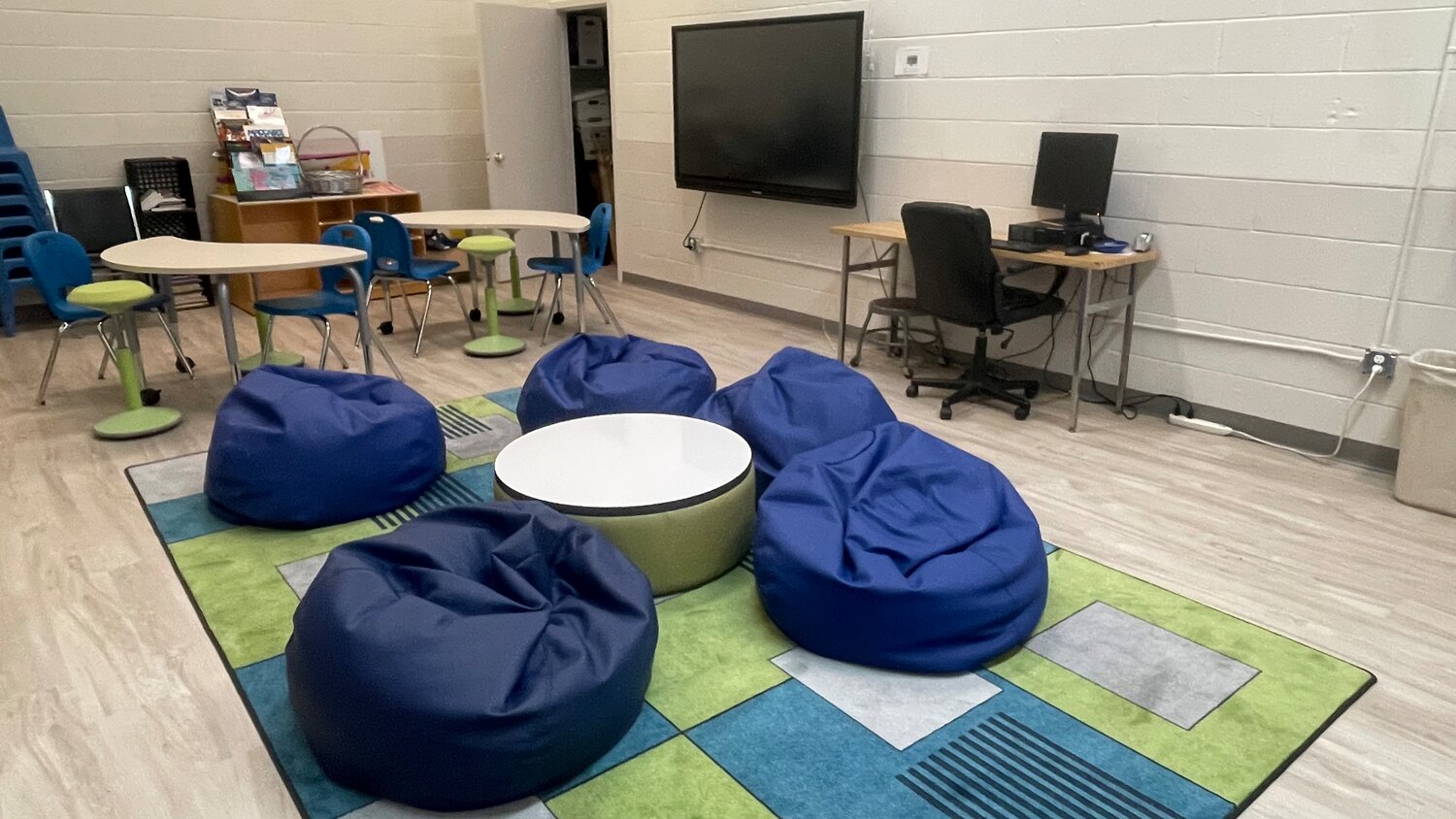What's new at Congregation Beth Ohr's Hebrew School?
Director of congregational learning revamps programs
Over the past two years, the Hebrew school at Congregation Beth Ohr, in Bellmore, has undergone some extensive changes in both its curriculum and physical appearance.
The lively conservative synagogue, which merged with Temple Israel of South Merrick in 2019, now serves around 60 students in its school, and offers a fun, unique and experiential approach to Jewish learning, thanks to the efforts of Ellen Agulnick, Beth Ohr’s director of congregational learning and programming.
Agulnick arrived at Beth Ohr two years ago from the Boston area, where she built her career in education. After initially working in a public school setting, she took some time off to raise her children. Everything after that, she said, was in a Jewish setting. Before moving to Long Island, she finished her time in Massachusetts as principal of a Jewish school.
“It was rough being a school principal during the pandemic,” Agulnick said. “Some factors in my life had changed, and I felt I didn’t need to be in Boston anymore. Two of my three kids were here in New York, so I started looking for jobs here — and I found this job, which sounded perfect for a semiretired school principal.”
Agulnick began her role in person in August 2021. “When I walked in, I saw a Hebrew school that looked like the Hebrew school I went to,” she said, “but I saw a lot of potential, because that’s what I like to do. I like to fix and build.”
At Beth Ohr, Agulnick is in charge of all learning. But in her first few years, her focus has been on revitalizing and expanding the Hebrew school.
“I’ve expanded the program,” she explained. “Last year, we added a kindergarten component, and this year we’re adding an early childhood class for kids ages 3 to 5.”
The younger students meet for class on Sundays, and Grade 7 meets on Wednesday.
When Agulnick first arrived at Beth Ohr, there was no curriculum system in place, so she implemented one with the company Shalom Learning. “The program can actually lend itself to being an online program or be an in-person program, and there’s components to both,” she said. “I felt like an out-of-the-box curriculum, at this point, was something that we needed just to get ourselves going.”
Agulnick also piloted an online-only option for some students. She understood that kids have other commitments beyond Hebrew school, like sports or extracurricular activities.
“I was trying to meet families where they are,” she said. “I want to say we had maybe 10 kids participate in the program at that time, and it was successful. I was afraid of kids losing out.
“I have lofty goals, even though we’re only here four hours a week,” she added. “I really wanted to make sure that kids are getting the most out of their time. I wanted to focus on flexible scheduling so kids wouldn’t be missing so much. And I wanted to make it more fun for our kids — frontal learning doesn’t work anymore, so I really wanted to have kids have an opportunity to have things be more experiential.”
With Shalom Learning serving as the backbone of Beth Ohr’s new curriculum, the school also began offering electives, in subjects many might not expect at a Hebrew school. Students were presented several options, including everything from cooking to yoga to filmmaking.
“I wanted them to come to school,” Agulnick said, “and I wanted them to want to be here.”
During the first half hour of Hebrew School, the students are all together in prayer. In the second half hour, they’re in their homerooms with other students their age, learning what’s in the curriculum for that week. And in their last hour of the day, the students are either learning Hebrew or attending their elective.
Whatever they learn in the curriculum gets embedded into the electives. Electives change twice a year, and Agulnick encourages students to pick different ones.
Using the cooking elective as an example, she said, “If they were learning about Hanukkah, they’d be making latkes, or if it was Purim, they’d maybe make hamantash.”
And technology improvements in classrooms have made learning easier and more fun. “The synagogue actually installed screens in every classroom,” Agulnick said. “They invested in Chromebooks for us. We also do other hands-on things, Legos and things like that. I’m really trying to make it more 21st-century learning.”
“The synagogue has embraced the changed in our Hebrew school wholeheartedly,” Joseph Weisbord, president of Congregation Beth Ohr, said. “We’re thrilled to see our students thriving and enjoying their time here.
“As a grandparent, when I pick up my grandsons, I am able to see firsthand how excited all of the students are about their experiences,” Weisbord added.
Agulnick also helped changed the look of the classrooms — the walls and flooring are now brighter, and new furniture makes the space more flexible. There are now white erasable board tables that can be drawn on, and beanbags and fun stools replaced some traditional desks and seating.
“It’s lighter and brighter, and again, much more 21st century,” she said. “One size doesn’t fit all, so flexible seating is really important. I’m really excited about it, because it will get rid of that whole frontal learning mindset. Everything will be much more collaborative.”
The Hebrew’s school new methods make kids want to come back, Agulnick said, and want to learn. Once they graduate, they’re encouraged to stop by, help out, and meet the next generation of students.
“My goal is that I want our kids to just love being Jewish,” she said, “and to find their Jewish identity here.”







